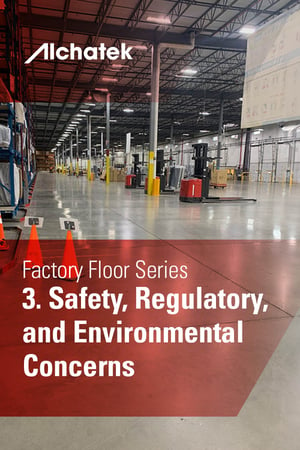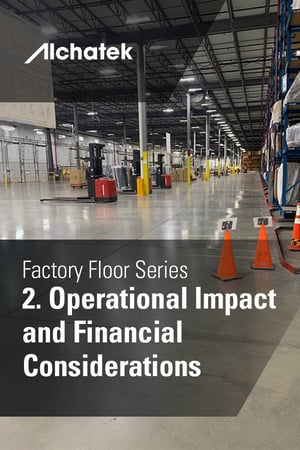
 It's time to revisit the idea of remaining profitable during the winter months, but where does one begin?
It's time to revisit the idea of remaining profitable during the winter months, but where does one begin?
Engaging with Engineers and Consultants
Networking with engineers is a cornerstone for securing a consistent flow of projects. Engineers are usually involved in any sizable geotechnical or waterproofing project. From industrial settings to property management companies and hydroelectric plants, an engineering firm is almost always the first port of call for problem-solving.
Alchatek offers presentations designed for engineers that cover a range of polyurethane applications like leak sealing, soil stabilization, and concrete lifting. These presentations often qualify for continuing education credits, offering engineers added value. We prefer to collaborate with local contractors for these presentations, creating a link between suppliers, contractors, and engineers.
With diligent follow-up, such activities typically yield smaller-scale projects, which, when successfully completed, pave the way for larger undertakings. Engineers are the go-to professionals for property owners facing issues. If you establish yourself as a reliable, punctual, and skilled contractor, you are more likely to secure jobs without having to go through the bidding process.
Networking Through Professional Associations
A wealth of professional associations exists across various fields and trades. Becoming a member provides an excellent platform for networking and discovering new opportunities.
Take, for instance, your local chapter of BOMA (Building Owners and Managers Association), which represents the expansive commercial real estate industry. BOMA members are mainly property owners, facility managers, and building engineers—a perfect audience for discussions on topics like elevator pits, parking structures, and tripping hazards.
IFMA (International Facility Management Association) is another noteworthy association. While BOMA represents the "landlords," IFMA represents the "tenants," who are often the first to report issues. Presenting to IFMA allows you to inform facility managers about problem-solving polyurethane technologies.
Don't overlook ASCE (American Society of Civil Engineers) either. It's not just for engineers; they offer a category called Organization Partners for non-engineers. Your presentation here can also be facilitated by Alchatek.
Reaching Out to Government Agencies
Sometimes old-school techniques like making phone calls and doing online research are invaluable. Connecting with local municipalities and Departments of Transportation (DOTs) can give you insights into upcoming projects. Attend bid meetings to network with general contractors and engineers.
Don't ignore mass transit authorities in cities with train or subway systems. These authorities regularly release projects for bidding and have engineering departments that could benefit from your solutions in leak sealing and geotechnical applications.
The cold months are an opportunity if you're a contractor seeking winter work. Not only will these strategies help you find winter projects, but they will also positively impact your business all year round. Reach out to the Alchatek support team for guidance.




 Contractors specializing in chemical grouting in the northern United States are often constrained by the seasons when it comes to outdoor soil stabilization and slab lifting tasks. However, with strategic planning, they can also find profitable avenues to keep busy during winter.
Contractors specializing in chemical grouting in the northern United States are often constrained by the seasons when it comes to outdoor soil stabilization and slab lifting tasks. However, with strategic planning, they can also find profitable avenues to keep busy during winter.
 Technical Support
Technical Support
 Plant and factory managers must select qualified contractors in order to effectively address the challenges associated with slab instability. Choosing contractors with expertise in slab stabilization and polyurethane application will enable managers to tackle these issues successfully.
Plant and factory managers must select qualified contractors in order to effectively address the challenges associated with slab instability. Choosing contractors with expertise in slab stabilization and polyurethane application will enable managers to tackle these issues successfully.
 The preceding articles in this series have dissected the operational and financial implications of slab instability in manufacturing plants and factories. This third installment will pivot to another set of equally critical concerns: safety, regulatory compliance, and environmental impact. These aspects often intertwine with operational and financial considerations, making them indispensable in any comprehensive discussion about slab instability.
The preceding articles in this series have dissected the operational and financial implications of slab instability in manufacturing plants and factories. This third installment will pivot to another set of equally critical concerns: safety, regulatory compliance, and environmental impact. These aspects often intertwine with operational and financial considerations, making them indispensable in any comprehensive discussion about slab instability.
 The previous article in this series introduced the top 10 concerns that plant and factory managers face when dealing with unstable or sunken slabs. This installment will focus on the operational and financial implications of slab instability, two aspects that are often at the forefront of managerial concerns. Understanding these implications is crucial for making informed decisions on how to address the issue effectively.
The previous article in this series introduced the top 10 concerns that plant and factory managers face when dealing with unstable or sunken slabs. This installment will focus on the operational and financial implications of slab instability, two aspects that are often at the forefront of managerial concerns. Understanding these implications is crucial for making informed decisions on how to address the issue effectively.
 In the world of manufacturing and industrial operations, the integrity of facility floors often takes a backseat to more immediate concerns like machinery efficiency, workforce productivity, and quality control. However, the stability of concrete slabs in manufacturing plants and factories serves as the foundation upon which these critical operations rest. This article aims to shed light on the importance of maintaining stable slabs and to introduce the top 10 concerns that plant and factory managers face when dealing with unstable or sunken slabs.
In the world of manufacturing and industrial operations, the integrity of facility floors often takes a backseat to more immediate concerns like machinery efficiency, workforce productivity, and quality control. However, the stability of concrete slabs in manufacturing plants and factories serves as the foundation upon which these critical operations rest. This article aims to shed light on the importance of maintaining stable slabs and to introduce the top 10 concerns that plant and factory managers face when dealing with unstable or sunken slabs.
 In the earlier posts of this series, the importance of slab leveling, and soil stabilization has been emphasized, along with the specific risks faced by various industries and the notable advantages of using polyurethane, as supported by real-world case studies. The focus now shifts to providing commercial property owners and managers with actionable steps for effectively addressing these critical issues.
In the earlier posts of this series, the importance of slab leveling, and soil stabilization has been emphasized, along with the specific risks faced by various industries and the notable advantages of using polyurethane, as supported by real-world case studies. The focus now shifts to providing commercial property owners and managers with actionable steps for effectively addressing these critical issues.
 In the field of commercial property management, maintaining the integrity of concrete slabs and soil stability is crucial. Although the general advantages of using polyurethane have been discussed, real-world case studies provide the most compelling evidence of its effectiveness. This post will explore two such case studies to demonstrate the efficacy of polyurethane in addressing complex slab and soil challenges.
In the field of commercial property management, maintaining the integrity of concrete slabs and soil stability is crucial. Although the general advantages of using polyurethane have been discussed, real-world case studies provide the most compelling evidence of its effectiveness. This post will explore two such case studies to demonstrate the efficacy of polyurethane in addressing complex slab and soil challenges.
 In the previous post, the basics of slab leveling, and soil stabilization were introduced, along with a discussion on the types of commercial properties commonly affected by these issues. Today's focus will be on delving deeper into the specific risks and dangers that different industries face when it comes to sinking slabs and unstable soil.
In the previous post, the basics of slab leveling, and soil stabilization were introduced, along with a discussion on the types of commercial properties commonly affected by these issues. Today's focus will be on delving deeper into the specific risks and dangers that different industries face when it comes to sinking slabs and unstable soil.